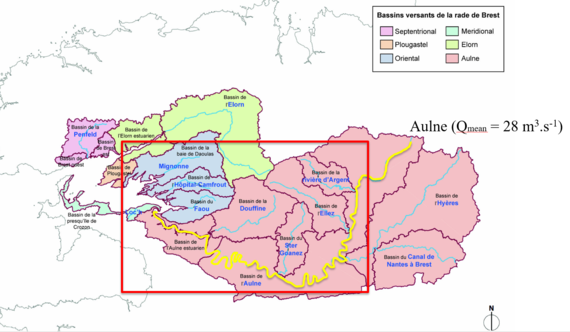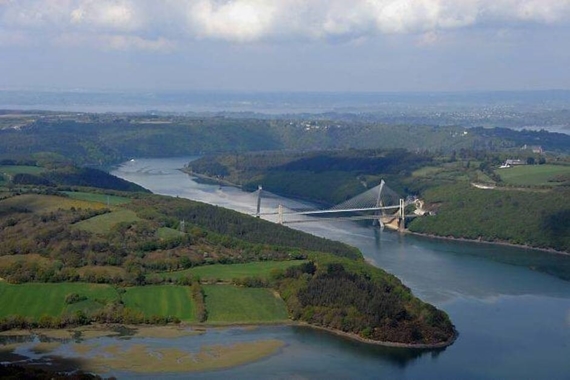COMENRADE (2020-2021)
Contamination, origin, and transfer of trace metal elements on the southeastern part of Brest Bay
Ifremer Coordination | Type of project | Financing | Project duration | Link |
N. Briant (LBCM) | National | DGAL, AELB et DPMA | 2020-2021 |
Located at the western tip of France and closely open to the Atlantic Ocean, the Brest Bay is a transition zone between marine and continental environments. A vulnerable environment and particularly sensitive to the impact of anthropization, it must respond to economic, social, and political challenges. Moreover, it concentrates many uses like fishing, market gardening, agriculture, livestock, maritime transport, dredging and slashing activity, recreational activities, ... . A major challenge for the management of this site is to reconcile economic development and the preservation of an exceptional environment.
The sediment compartment represents the major natural receptor for a large number of chemical contaminants. It behaves both as a sink and as a source of contamination for the entire environment and the food chain. Indeed, the contaminants accumulated in the sediment are associated with the particulate phase in a more or less reversible manner. A fraction of these contaminants can therefore be remobilized in dissolved form and thus become available for various processes such as bioaccumulation, diffusive exchanges and degradation. The possible contributions of metallic trace elements (TME) to the bay are varied: i) coastal rivers (Aulne and Elorn) which drain agricultural, urban and mining watersheds; ii) military activity in the harbor (paintings, ammunition, etc.); iii) urban activity in the city of Brest; iv) shellfish farming activity; v) marine inputs (macrotidal zone subject to the influence of the tides).
Recently, the detection of high lead concentrations in a sample of mussels, from the bay, exceeding the health threshold accepted for human consumption has highlighted the need for knowledge on the fate of metal contaminants in this environment. In this context,
the study on the contamination in the southeastern part of Brest Bay has the scientific objectives of answering three major questions:
- What is the spatial distribution of the contamination to the southeastern part of Brest Bay and how does it evolve during the annual cycle?
- What are the major sources of contamination and are there processes of dispersion / remobilization of ETM between the Aulne river, estuary and bay compartments?
- What are the impacts of multi-source contamination on biota?
The COMENRADE project, combines scientific expertises from the CCEM unit (metal and ecotoxycologie) and from LEMAR (UMR 6539).
Figure 1: Study area: Aulne River and southeastern part of Brest Bay.
Figure 2: Photo of the Aulne estuary (Source: V. Mouchel).
Ifremer staff | Academic partners |
Unité BE (LBCM/LEX/ROCCH) | LEMAR (UMR 6539) |



